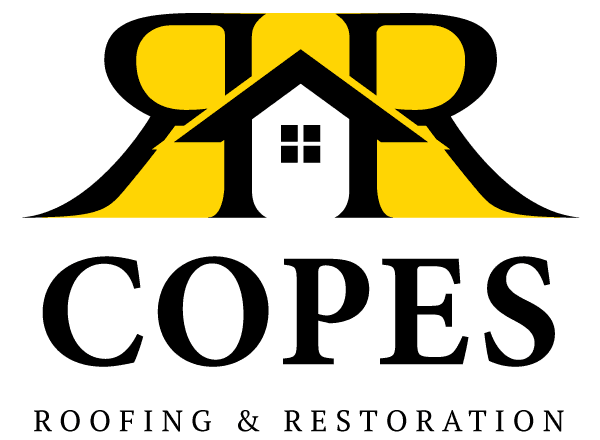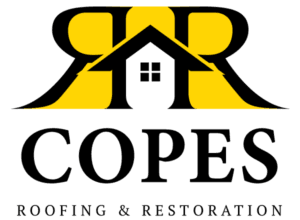When you’re investing in a new roof, you want it to protect your home for decades to come. Metal roofing stands out as one of the most durable options available, offering exceptional longevity that far exceeds traditional materials.
Ready to upgrade to a metal roof that could outlast your mortgage? Contact Copes R&R Construction today to discover how our expert installation can give you 40-70 years of worry-free protection.
5 Common Types of Metal Roofs
Standing Seam Metal Roofing
Standing seam systems feature raised seams that connect panels vertically, creating a sleek, modern appearance. These roofs typically last 50-70 years thanks to their concealed fastener design. The interlocking panels provide superior weather resistance. You’ll find these performing exceptionally well in areas with heavy snow or rain. Most homeowners appreciate the minimal maintenance requirements.
Metal Shingles
Designed to mimic traditional roofing materials, metal shingles offer classic aesthetics with modern durability. With proper installation, expect 40-50 years of reliable service from these versatile options. They resist impact damage better than their asphalt counterparts while weighing significantly less. Since they come in various styles mimicking wood, slate, or tile, you can achieve any look you desire.
Corrugated Metal Panels
Originally popular for agricultural buildings, corrugated panels now grace many residential homes. Their distinctive wavy pattern provides structural strength that can last 25-40 years. While more affordable than other metal options, they still outperform traditional shingles. Installation tends to be quicker due to the larger panel sizes. Regular maintenance helps maximize their lifespan potential.
Stone-Coated Steel
Combining the strength of steel with the beauty of stone granules, these tiles deliver 40-60 years of protection. The stone coating adds an extra layer of durability against weather elements. Homeowners love how they reduce noise during rainstorms compared to bare metal. They maintain their appearance longer than painted metal surfaces. Plus, they offer excellent fire resistance ratings.
Copper Roofing
Premium copper roofing represents the pinnacle of longevity, often lasting 70-100+ years. Over time, it develops a distinctive patina that many homeowners find attractive. Though the initial investment is higher, the exceptional lifespan justifies the cost. Copper naturally resists corrosion without any coating needed. It’s also completely recyclable at the end of its very long service life.
How often should a metal roof be replaced?
Unlike asphalt shingles that need replacement every 15-20 years, a properly installed metal roof should serve you for 40-70 years before requiring replacement. Some manufacturers even back their products with 30-50-year warranties, reflecting confidence in their longevity. You’ll likely replace many other home components before needing a new metal roof.
7 Signs Your Roof Needs to Be Replaced
- Widespread rust or corrosion – While surface rust can be treated, extensive corrosion compromising the metal’s integrity means it’s time for replacement
- Multiple leaks in different areas – One leak might be repairable, but several indicate systemic failure
- Loose or missing panels after storms – When fasteners fail and panels won’t stay secure, your roof’s protective barrier is compromised
- Visible sagging or warping – This suggests structural issues that patching won’t solve
- Paint or coating failure across large sections – When protective finishes fail extensively, the underlying metal becomes vulnerable
- Age exceeding the manufacturer’s expected lifespan – Even quality materials eventually wear out
- Energy bills are climbing steadily – Poor insulation or ventilation from an aging roof affects your home’s efficiency
4 Factors That Affect a Metal Roof’s Lifespan
Climate and Weather Conditions
Your local climate plays a crucial role in determining how long your roof will last. Coastal areas with salt air can accelerate corrosion, potentially reducing lifespan by 10-15 years without proper coatings. Regions with extreme temperature swings cause more expansion and contraction stress on fasteners and seams. Heavy snow loads test structural integrity, while intense UV exposure in sunny climates can degrade protective coatings faster. Choosing climate-appropriate materials and coatings helps combat these challenges.
Installation Quality
Even the highest quality of materials won’t perform well with poor installation techniques. Experienced installers understand proper fastening patterns, expansion allowances, and flashing details that prevent premature failure. They ensure adequate ventilation to prevent moisture buildup that causes rust from within. Cutting corners during installation might save money initially, but it costs years of service life. Professional installation typically adds 10-15 more years compared to DIY or inexperienced contractors.
Maintenance Practices
Regular maintenance can add 15-20 years to your roof’s life expectancy. Simple tasks like clearing debris prevent water pooling and corrosion. Annual inspections catch small issues before they become major problems. Keeping gutters clean ensures proper drainage and prevents ice dams. Touch-up painting on scratches maintains the protective barrier. Neglected roofs fail prematurely, while well-maintained ones often exceed their expected lifespan.
Roof Pitch and Design
Steeper roofs shed water and snow more effectively, reducing moisture exposure that shortens lifespan. Low-slope applications require more robust waterproofing systems and frequent maintenance. Complex designs with multiple valleys, dormers, or penetrations create more potential failure points. Proper design, considering local conditions, optimizes longevity while meeting aesthetic goals.
How to Prolong Your Metal Roof
- Schedule annual professional inspections – Have experts check fasteners, sealants, and overall condition each year to catch problems early
- Keep gutters and valleys clear – Remove leaves and debris seasonally to ensure proper water drainage and prevent rust-causing moisture buildup
- Trim overhanging branches – Prevent scratches from branches and reduce debris accumulation that traps moisture
- Address minor repairs immediately – Fix small issues like loose fasteners or minor scratches before they become expensive problems
- Apply touch-up paint to scratches – Protect exposed metal from rust by touching up any coating damage within a few weeks
- Ensure proper attic ventilation – Good airflow prevents condensation underneath your roof that causes premature corrosion
- Document maintenance and repairs – Keep records to maintain warranty coverage and track your roof’s condition over time
- Wash panels annually in coastal areas – Remove salt deposits that accelerate corrosion in marine environments
- Check and reseal penetrations – Inspect areas around vents, chimneys, and skylights where sealants may deteriorate
- Avoid walking on the roof unnecessarily – Minimize foot traffic to prevent dents and scratches that compromise protection
Are metal roofs high maintenance?
Contrary to common belief, metal roofs require less maintenance than most roofing materials. You won’t deal with cracked shingles, moss growth, or granule loss like with asphalt options. Most maintenance involves simple visual inspections and keeping the surface clear of debris. The durability of metal means fewer repairs over its lifespan compared to other materials.
Conclusion
Your metal roof represents one of the smartest long-term investments for protecting your home. With proper installation and minimal maintenance, you’re looking at decades of reliable performance that saves money and provides peace of mind.
Don’t wait for your current roof to fail. Take the proactive step today! Schedule your consultation with Copes R&R Construction to explore metal roofing options perfect for your home, and follow us on Facebook for more tips on maximizing your roof’s lifespan and protecting your biggest investment.


